DECARBONISATION
World’s first self-sufficient, hydrogen-powered, zero-emission boat docks in Cape Town
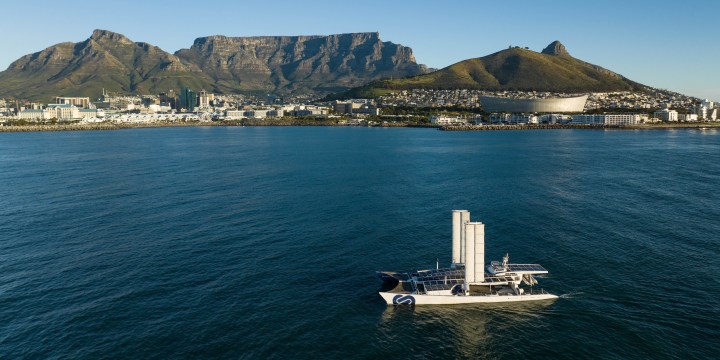
The Energy Observer is much more than a sailing vessel – it’s a floating green energy laboratory and smart grid that demonstrates the possibilities of a greener future for marine transportation.
On Monday, 12 June, a zero-emission, hydrogen-powered catamaran docked at the V&A Waterfront in Cape Town offering South Africans a glimpse into the future of energy and sustainable mobility.
The vessel is called the Energy Observer and it is more a floating laboratory than a sailboat. It is also a tangible example of how innovative technologies can be integrated to create a self-sufficient and emission-free vessel. The designers say they aimed to prove that “entirely decarbonised, decentralised and digitised energy is possible”.
Launched in Saint-Malo, France in 2017, the Energy Observer has clocked more than 50,000 nautical miles and visited over 40 countries with some 80 stopovers, from St Petersburg to Singapore.
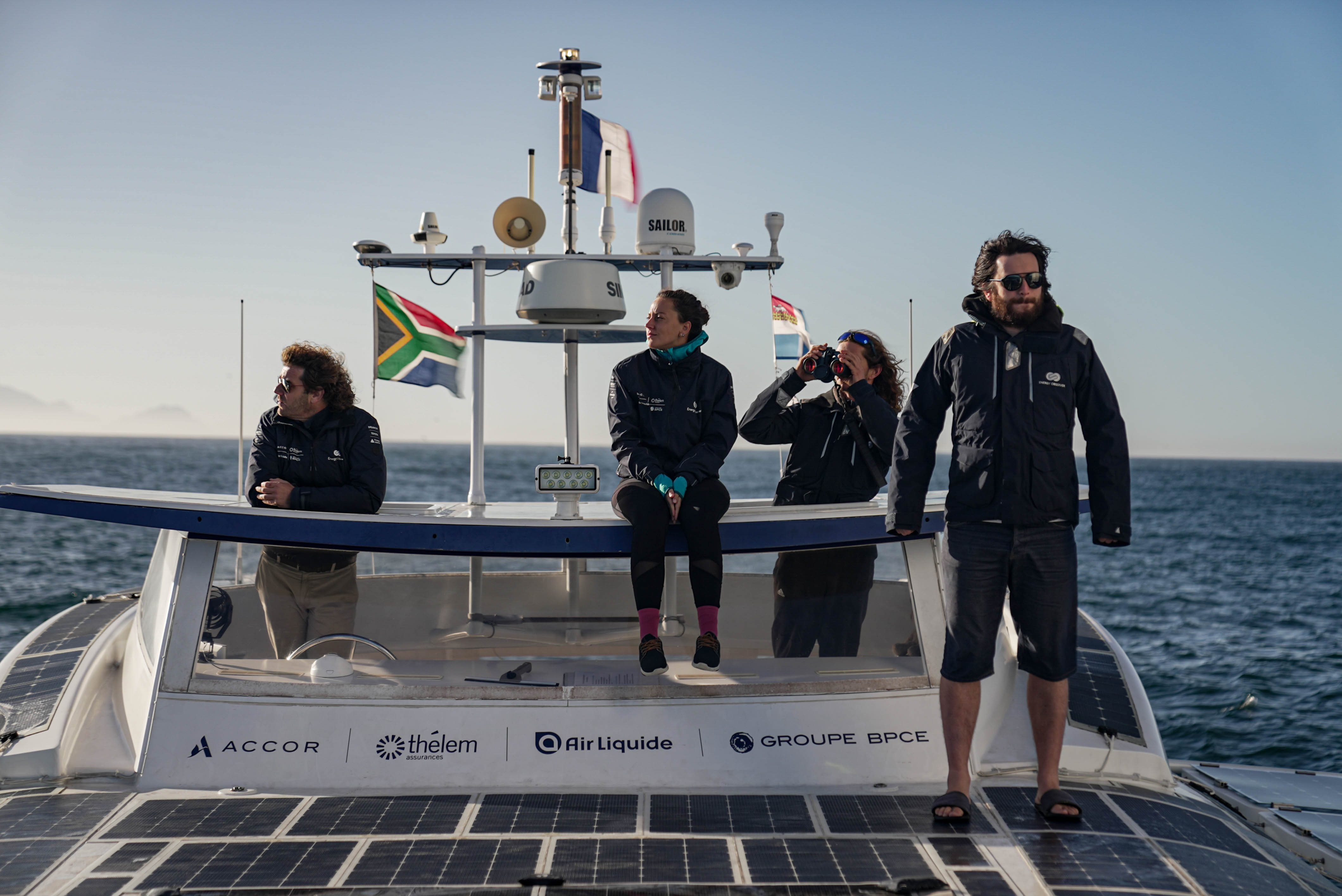
The crew aboard the Energy Observer. (Photo: @Energy Observer Productions/Mélanie de Groot Van Embden)
The Energy Observer is 31m long and 13m wide with a 2.2m draft. The vessel weighs 34 tonnes and has a hydrogen capacity of 62kg. It combines technologies from generation to storage using solar, wind and hydropower as well as batteries and hydrogen.
“Her electric propulsion is powered by renewable energies, including sun, wind, and hydropower. But what makes her unique is her ability to store energy in the form of hydrogen produced from seawater, a technology that allows her to navigate in total autonomy,” said Victorien Erussard, the captain and founder of Energy Observer.
The vessel creates hydrogen by desalinating seawater and then purifying the desalinated “wild water”. The resultant de-ionised water is then subjected to a process of electrolysis, with the end result being hydrogen for storage and later use.
The 62kg of hydrogen stored onboard provides 1MWh of electricity and 1MWh of thermal energy that can be used for heating and hot water.
The Energy Observer uses hydrogen fuel cells as a clean and efficient way to convert stored hydrogen into electrical energy. Fuel cells produce electricity through a chemical reaction between hydrogen and oxygen, with water vapour being the only byproduct.
Read more in Daily Maverick: Green hydrogen provides answer to many of South Africa’s decarbonisation prayers, studies show
Luc Bourserie, the systems engineer on the Energy Observer, shared more details with Daily Maverick.
“So as you can see, we have lots of solar panels all over the boat. In total, we have 200m² of solar panels for a peak production of 33kW. So with this electricity, we will use it to supply the electrical motors, the life on board; and the excess of electricity that is not used we will store it in batteries. But when the batteries are full and we still have an excess of energy, we’ll use it to produce and store hydrogen.
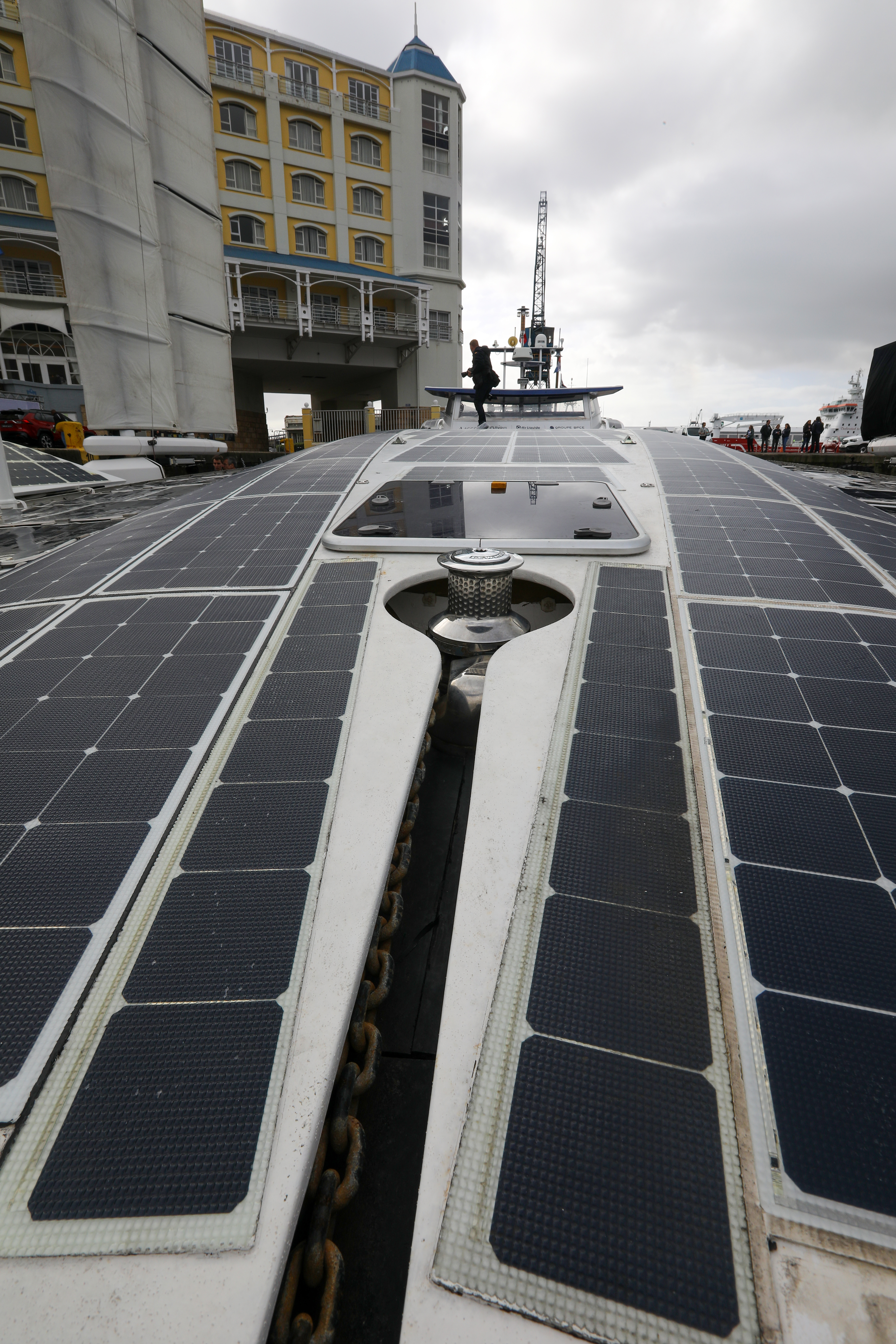
A view of the solar panels on top of the Energy Observer. (Photo: Shelley Christians)
“We will desalinate water from the sea to have pure water. And [with] the pure water, we will use the electricity that we have in excess to break the molecules of [that] water into H₂ and O₂.
“The oxygen we release; the hydrogen we compress it, store it in the eight big bottles and we compress it to 350 bars. This is how we produce hydrogen with the excess of electricity [that we generate] from the sun.”
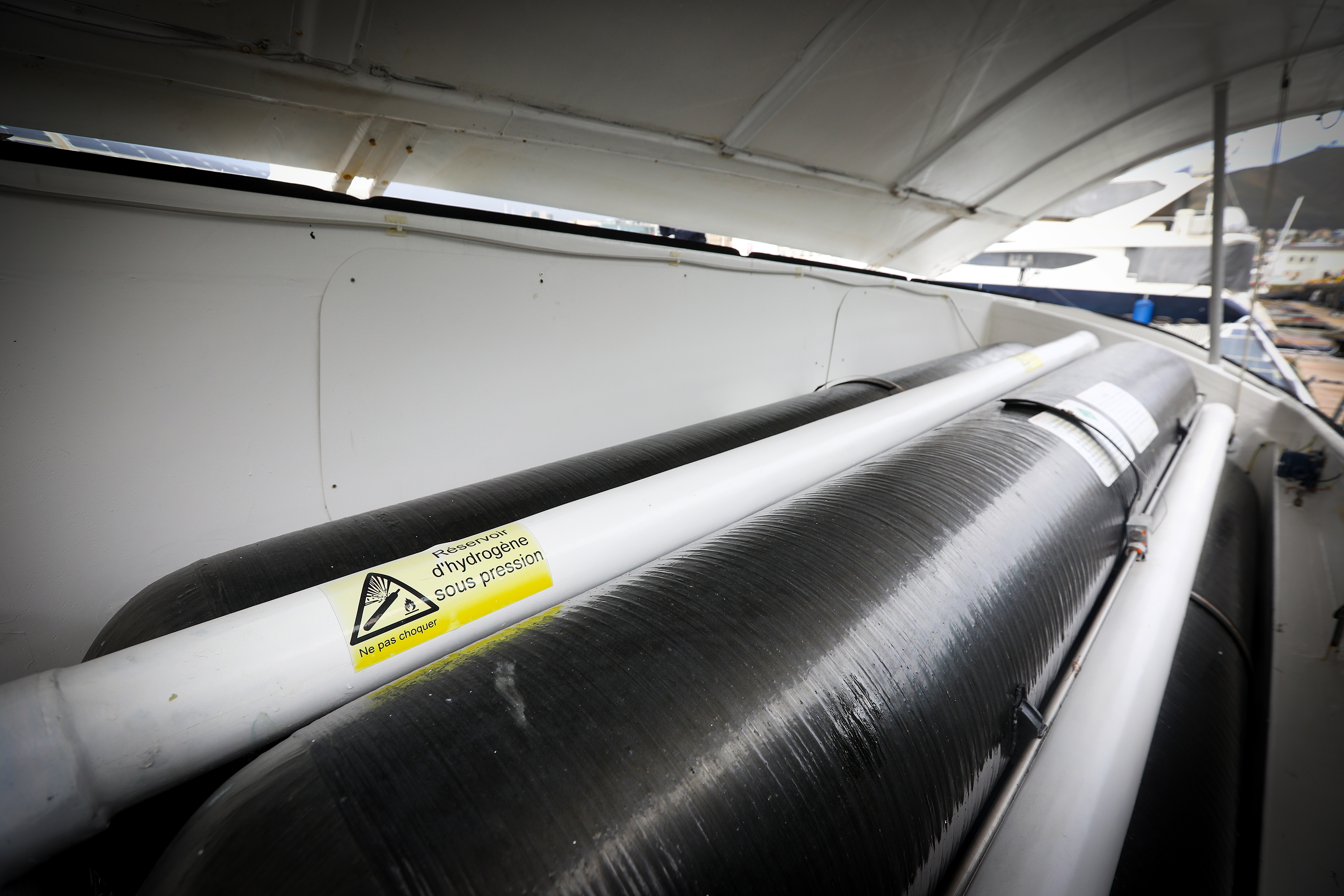
The hydrogen tanks on board of the Energy Observer. (Photo: Shelley Christians)
Energy from the wind
The boat also has sails or “ocean wings”, Bourserie explained.
“We will use it to take the energy from the wind. How does it work? It’s fully automated. It’s very efficient because it’s always putting itself in the right direction depending on the wind speed and the wind directions. It’s not very big but it is very efficient. It is 1.5 or two times more efficient than classical sails because of this automated process.
Read more in Daily Maverick: Maritime Environment Protection Committee fails to set the course for shipping industry’s decarbonisation targets
“So we have the sun, we have the wind and we have a bit of tidal [energy]. When we use hydro generation, it is also the wind that will push us and we can decide that we are going fast enough and we use the propellers in reverse mode, and like when you have your bike and you are cycling and you want to get some electricity for your light … it’s the same process. The propellers; we put it in reverse mode and when the wind is pushing us, it will make the propeller turn and we can take back the energy,” he said.
Asked when the hydrogen is used, he explained that once the sun goes down, they make use of the power stored in the batteries and when those batteries reach a low level they turn on the fuel cell.
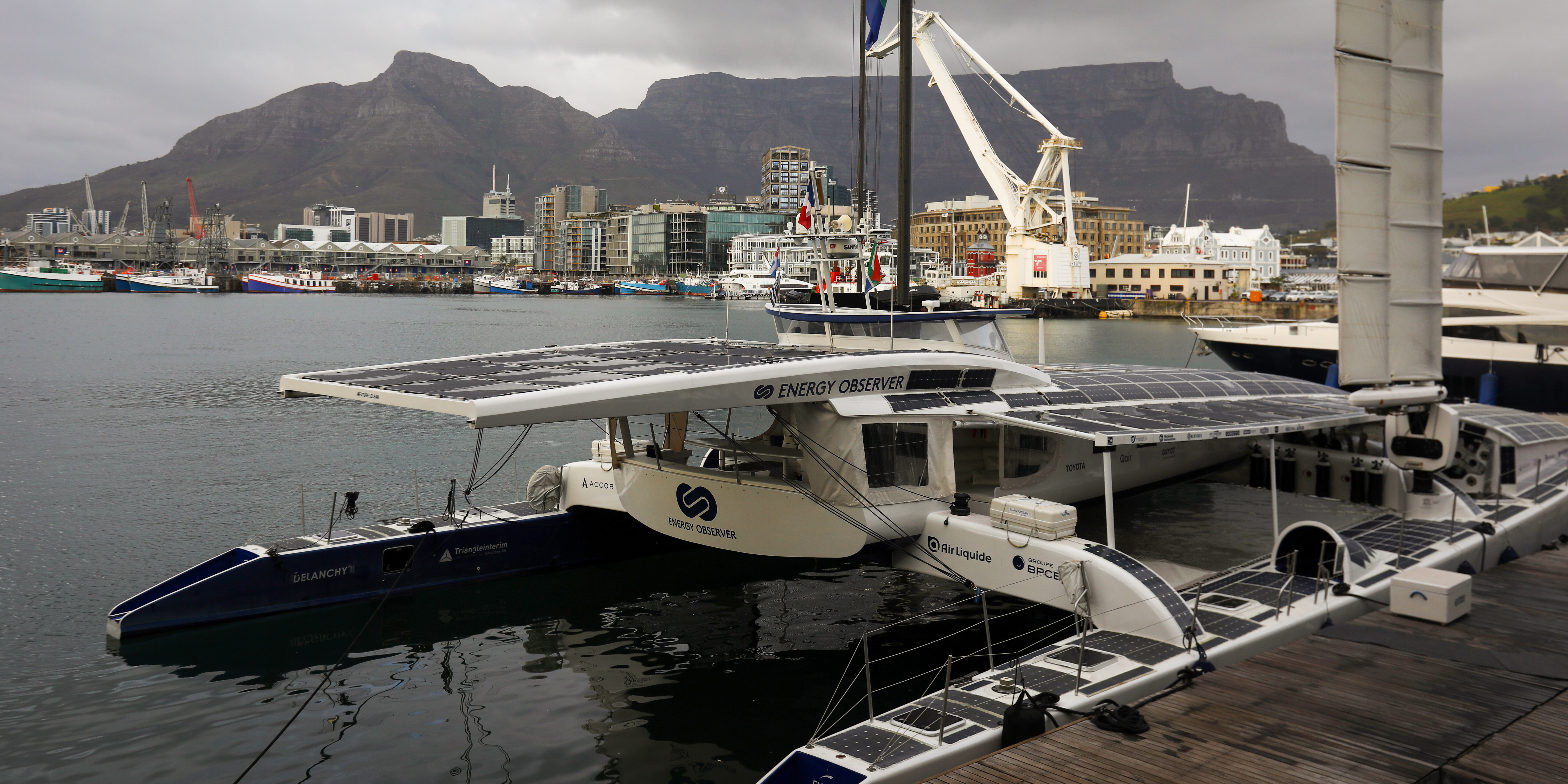
After 33 days of sailing and 2,300 nautical miles covered, the Energy Observer has docked at the V&A Waterfront alongside her educational exhibition village, open to the public from 12 June to 20th June. 12 June 2023. Photo: Shelley Christians
“The fuel cell is a system that will change hydrogen back into electricity. So it’s a reverse process that we used to produce hydrogen. We put hydrogen, we put oxygen and we create water, electricity and heat.”
Asked about the storage capacity and the array of batteries, Bourserie said, “We can store 10 times more electrical energy into the hydrogen [tanks] than into the batteries, while the total weight of the batteries is approximately equivalent to the total weight of the hydrogen system.”
🇿🇦 @energy_observer has arrived in #CapeTown for her first major stopover in #Africa and the 80th of her #Odyssey! Our laboratory-vessel and our #pedagogical exhibition village will be visible at the @VandAWaterfront from June 12 to 20!#energyobserver #exploringpositiveenergies pic.twitter.com/kXtU0ucBLS
— Energy Observer (@energy_observer) June 12, 2023
The vessel docked in Cape Town with a message and a promise of a future of decarbonised marine transportation.
Daily Maverick previously reported that the shipping industry is responsible for nearly 3% of global greenhouse gas emissions, making it the seventh-biggest polluter in the world.
Green hydrogen and associated technologies are seen as one way to mitigate these emissions, something the team on the Energy Observer is well aware of.
Their next project is a zero-emission, liquid hydrogen-powered cargo ship designed to take on heavy loads with the capacity to transport more than 200 freight containers. DM

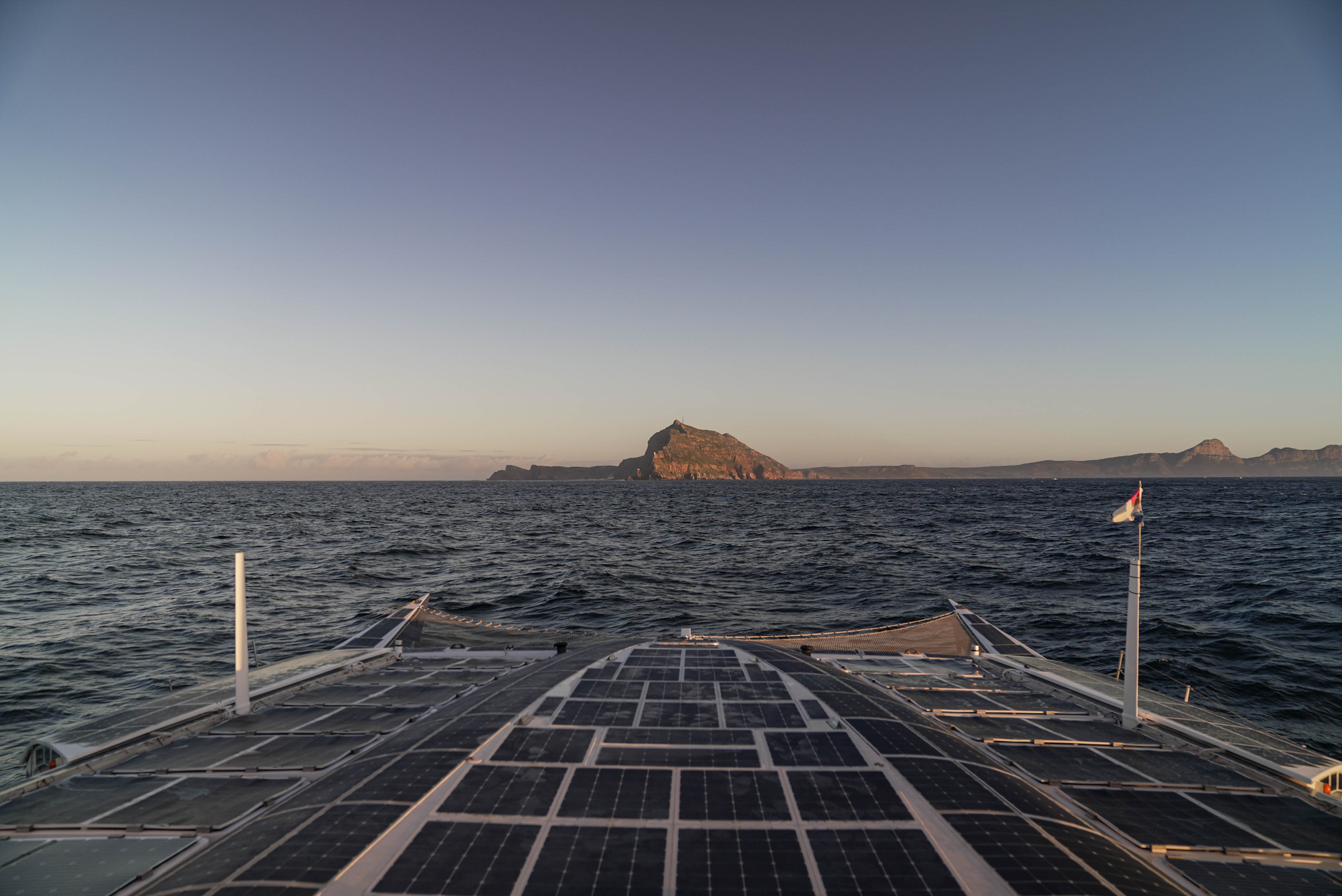


















 Become an Insider
Become an Insider
Great stuff!!
Truly awesome!!! … I want one